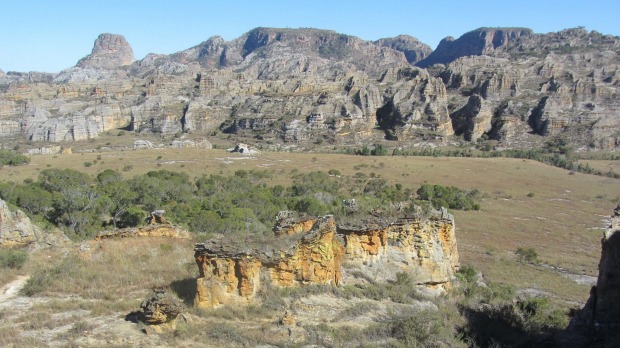
First, there are the tombs. Look up and they are there, some set in sheer cliff faces, some at ground level, most camouflaged by the surrounding rock.
This is how the Malagasi Bari tribe, of Bantu origins, bury their dead. Grieving families find natural caves to house the departed, blocking the opening with hundreds of stones, piled closely and carefully, in an extraordinary, centuries-old ritual.
Then, five years later, the family returns in what – to Western minds at least – might be an even more extraordinary ritual. The remains of the ancestor are removed, and the bones passed around among family members as others sing and dance, celebrate and cry.
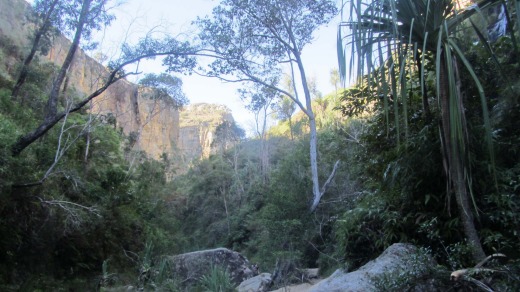
Then the bones are re-entombed, higher and more precariously, in new natural caves. The older the ancestor, the higher the tomb, the closer they will be to God. From there the dead will act as a messenger for those left behind.
And some of the tombs, guide Coco explains, are very, very high. As I look up, I feel as if I am being looked upon, looked over, by those who have gone before.
The story goes that a teenager, plied with alcohol to give him the courage to scale down to a particularly high cave by rope, fell to his death. And so the circle of burials continues.
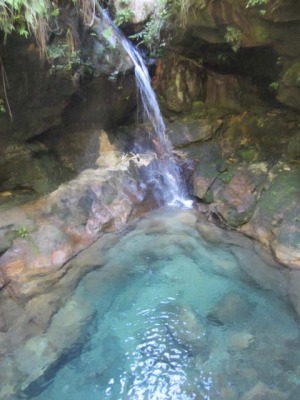
This is the entry to Madagascar's Isalo National Park, a fascinating introduction to a place that takes you through some of the most contrasting landscapes you may ever encounter in an area this size.
Rocky cliff faces give way to plains fringed by towering sandstone formations that put my own tininess into perspective. Walk to the top of one of the peaks and look down to see the beehive-like, striped, rocky giants that seem to go on forever.
Just a short walk away, the stunning swimming pools begin. Frigid water spills from a waterfall into a green-tinged waterhole. And it is cold.
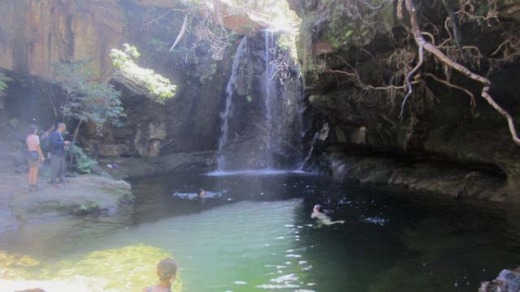
But that does not stop me from jumping in. The dips are brief and shivery, but welcome after the hike in the hot sun over dusty paths. The more game among us revel in the refreshing spill of the waterfall that pounds down from above, yet there are plenty of visitors who simply enjoy the pool from the warmth at its edge.
From the first pool, the well-worn route takes me over the long, hot path to the camp ground where lunch is served – among the lemurs. These inquisitive, ring-tailed beauties climb down from their tree perches to join the action below. Unafraid, the cheeky primates stare into camera lenses and get closer, and closer, and closer still.
The lone, dancing sifaka leaps through the trees and skips across the ground as happy snappers try to capture his image, leaving their meals untouched.
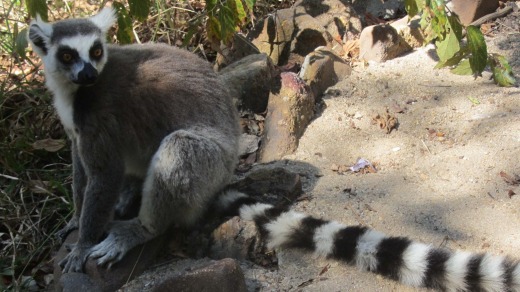
In the afternoon, a new trek begins. It could be in another park, another country even, given the difference in the landscape.
The 40-minute hike through the Namaza canyon leads us through a tiny microclimate of gorgeous green trees, ferns and flowers, rockpools and waterfalls.
At the end of the taxing, slippery trek is the deep, cold Black Pool, where swimmers last a few moments before leaping out of the water into the warm air for relief.
But before the Black Pool, there is the Blue Pool, where crystal-clear waters spill into the azure space.
It is not warm, but more inviting, not nearly as cold as the Black Pool.
Fringed by rocks, travellers sit on the edge and look down as the more adventurous swimmers make the most of the canyon stop.
And in this land of the tombs of the ancestors, the refreshing waters bring new life to many a hot, exhausted hiker.
madagascar-tourisme.com/en
travelmadagascar.org
Air Madagascar flies into the capital, Antananarivo, from a number of Asian cities, including Bangkok and Singapore, as well as Mauritius or Seychelles if you choose to go via an island hop. See airmadagascar.com. Emirates flies to Johannesburg and code-share South African Airways flights are available from there. See emirates.com/au; flysaa.com.
Ranohira is the nearest decent-sized town and the best base for visits to Isalo. Stay in the centre of town at Hotel Orchidee d'Isalo, with doubles from about $28 a night; see orchidee-isalo.com. Hotel Isalo Ranch, a short stroll from the village, costs about $60 for a bungalow that sleeps two, and you can camp there for $6 a night per person; see isalo-ranch.com/en. There are a few bungalow options and a smattering of other camp grounds around town.